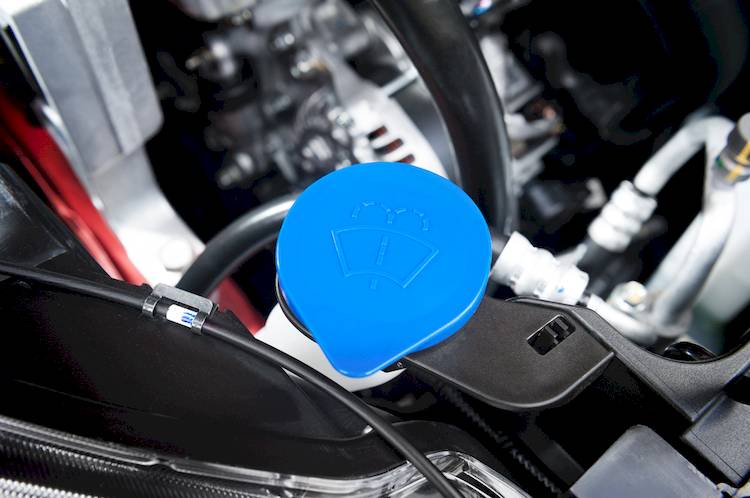

Contrary to popular belief, the windshield washer reservoir is typically not a part that wears out over time. They are made with high-grade plastic that can literally last forever and have been around since the mid-1980's. When it's damaged, it is usually due to an accident, putting water inside instead of windshield washer fluid only, or user error. Having a fully functional windshield washer system is critical to your safety. So when a problem with any component that makes up this system occurs, it's vital to have it repaired or replaced as soon as possible.
In today's modern cars, trucks, and SUVs, the windshield washer reservoir is commonly located under multiple engine parts, with the fill tube easily accessible on either the driver or passenger side. It is clearly marked with windshield wipers as to ensure it's not mistaken for a coolant overflow reservoir. Inside the reservoir is a pump that circulates washer fluid through plastic lines to the washer nozzles and then sprays evenly onto your windshield when the system is activated by the driver.
When a windshield washer reservoir breaks or is damaged, there will be several symptoms or warning signs that will alert you to this problem. If you notice these warning signs, it's recommended to contact an ASE certified mechanic to have them replace the windshield washer reservoir as soon as possible.
Here are a few of the warning signs to be aware of that might indicate a problem with your windshield washer reservoir.
1. Fluid leaks from below your car
With older vehicles that have the windshield washer reservoir mounted near vehicle exhaust systems, over a period of time the intensive heat may cause the reservoir to crack and develop a leak. However, the most common cause of a cracked reservoir is due to owners or mechanics putting water inside the unit as opposed to straight washer fluid. When the temperatures get below freezing, the water inside the reservoir will freeze, causing the plastic to harden and crack once it thaws. This will cause fluid to leak from the washer reservoir until it is empty.
If you try to turn on the washer pump while the tank is empty, it can; and often does lead to the pump being burnt out and needing to be replaced as well. This is why it's important to always fill the windshield washer reservoir only with washer fluid to avoid this potential problem.
2. Washer fluid is not spraying onto the windshield
As noted above, the heart of windshield washer system is the pump, which supplies fluid from the tank to the nozzles. However, when the system is engaged and you can hear the pump running, but no fluid sprays on the windshield, it may be due to a broken reservoir that has drained all the fluid out because it's damaged. It is also common, especially when water has been used, that the reservoir will develop mold, especially near the exit port where the pump attaches or draws fluid out of the reservoir.
Unfortunately, if the reservoir has grown mold, it's virtually impossible to remove, so you'll have to have an ASE certified mechanic replace the windshield washer reservoir and often the fluid lines.
3. Windshield fluid is frequently low or empty
Another symptom of a damaged washer reservoir is that the tank will leak, either from the bottom or sometimes from the top or sides of the tank. When the tank is cracked or damaged, the fluid will leak without having the system be active. You'll notice this if you look under your car and see light blue or light green fluid, commonly next to one of the front tires.
4. Cracks in the tank
During routine service like an oil change or radiator service, most local shops will fill up your windshield fluid as a courtesy. During this service, the technician will often inspect the tank (if they can) for physical damage such as cracks in the tank, or the supply line. As stated above, cracks usually cause the fluid to leak and can't be repaired. If a windshield washer tank is cracked, it will need to be replaced.
If you notice any of the above symptoms or warning signs, or if your windshield washer is just not operating as well as it should, contact a local ASE certified mechanic as soon as possible so they may inspect the entire system, diagnose the problem and repair or replace what is broken.



